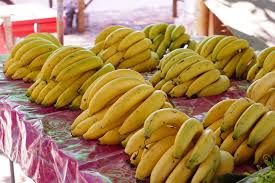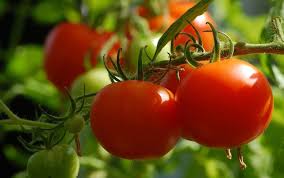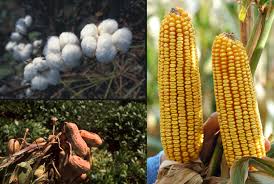Maturity in virtually all crops can be divided into two types: physiological maturity, which describes that period when sexually induced reproductive growth has ceased, and harvest maturity, where the seed, fruit, or other economically important organ of yield has reached a state of ripeness and can be removed from the parent plant for consumption.
For most agronomic crops, maturity ratings refer to the time from germination until physiological maturity.
Days to harvest maturity can differ from one season to the next for the same cultivar and are greatly influenced by environmental conditions, especially temperature, relative humidity, and extent of cloud cover after physiological maturity.
Read Also: Cutworms: How to Identify and Get Rid of Cutworms
Understanding the Maturation Stage of Crops

Maturation is indicative of the fruit being ready for harvest. At this point, the edible part of the fruit or vegetable is fully developed in size, although it may not be ready for immediate consumption.
Types of Maturity in Agricultural Produce
1. Physiological maturity: This refers to a particular stage in the development of a plant or plant organ. A crop is physiologically mature when its development is complete.
A physiologically mature fruit may not necessarily be commercially mature. For example, papayas are harvested for domestic markets at physiological maturity, i.e. when three-quarters of the fruit assumes a yellow-to-green colour.
2. Commercial maturity: Refers to the timing of harvest to meet specific market and consumer requirements. A crop is commercially mature when it reaches a developmental stage at which it can be marketed for a specific purpose, e.g. for consumption in the fresh state or for processing.
Papayas, for example, are harvested for export at the mature stage, i.e. when the fruit is firm and easy to handle. On arrival at the destination, the fruit is ripened in ripening rooms. Commercial maturity has little impact on physiological maturity.
Ripening Process in Fruits and Vegetables
Ripening follows or overlaps maturation, rendering the produce edible, as indicated by taste. Ripening is defined as the sequence of changes in texture, colour and flavour as a result of physiological and biochemical changes that make the fruit ready for consumption.
Artificial ripening is encouraged when climacteric fruits are picked relatively green and subsequently ripened by introducing ethylene or acetylene gas (calcium carbide), e.g. banana, mango, pear and avocado.
Based on the respiratory pattern and ripening behaviour, fruits are classified into two classes: climacteric fruits and non-climacteric fruits.
i. Climacteric fruits: These fruits attain maximum ripening immediately after harvest with high respiratory rate and energy at ripening.
They are harvested at full maturity and ripen after harvest, e.g. apple, apricot, avocado, banana, blueberry, kiwi fruit, mango, papaya, passionfruit, peach, peas, muskmelon, watermelon and tomato.
ii. Non-climacteric fruits: Harvested at full ripening (90–95%) with complete colour development. In non-climacteric fruits, the rate of respiration is lower than that of climacteric fruits.
They are difficult to transport and require sophisticated packing material because the fruits are soft and ripened, e.g. cherry, cucumber, grapes, lemon, pineapple, mandarins, etc.
Physiological and Biochemical Changes During Maturation and Ripening

i. Water: After harvest, during storage and ripening, fruits and vegetables lose water due to respiration, transpiration, and gas exchange. Water loss depends on relative humidity, temperature, anatomical structure, and the rate of transpiration and respiration. When the loss exceeds 5–10%, fruits and vegetables start to shrivel and become unusable.
ii. Colour: The most common change is the loss of green colour, due to degradation of chlorophyll. This change is influenced by pH and oxidative systems. The disappearance of chlorophyll is associated with the synthesis of pigments ranging from yellow to red.
iii. Carbohydrates (CHO): CHO are important in developing pleasing fruit flavours through sugar-to-acid balance, attractive colour, and good texture.
iv. Organic acids: Non-volatile organic acids are major cellular constituents that undergo changes during ripening. As the fruit ripens, acid content is reduced and converted to sugar.
v. Proteins: Proteins, such as free amino acids, are minor constituents and do not significantly affect eating quality.
vi. Flavouring compounds: Aroma plays an important role in the development of optimal eating quality and is due to the synthesis of many volatile organic compounds during ripening.
vii. Enzymes: Many chemical and physical processes occurring during fruit ripening are attributed to enzyme action.
Chemicals Used to Hasten or Delay Ripening in Post-Harvest Handling
a. Chemicals That Hasten Ripening:
1. Ethylene: Ethylene-related compounds like CEPA (2-chloroethylphosphonic acid) and CPTA (2,4-chlorophenyl ethylamine) are used in pre- and post-harvest treatments.
2. Acetylene and calcium carbide: Used to generate acetylene gas to hasten fruit ripening, especially in bananas.
3. Smoke treatment: Smoke from burning leaves, twigs or straw is used to hasten mango ripening.
4. 2,4-D: 2,4-dichlorophenoxyacetic acid is used for ripening guava, while 2,4,5-T is applied to sapota.
b. Chemicals That Delay Ripening:
1. Cytokinins and kinetins: Delay chlorophyll degradation and senescence in leafy vegetables.
2. Gibberellins (GA3): Post-harvest GA3 treatments retard ripening of tomatoes and bananas, lower respiratory rate, and delay colour change.
3. Growth retardants:
i. MH: Prevents sprouting in onion bulbs and potato tubers; delays ripening in mango.
ii. Alar: Reduces firmness and early maturation in fruits; applied before harvest to reduce senescence in lettuce.
iii. CCC (cycocel): Used to delay senescence in vegetables.
iv. Delaying Ripening Through Skin Coating (Waxing)
Edible waxes are applied to fruits to prevent water loss and reduce respiration rate. Sugar wax, combined with emulsifiers, is melted and then blended with boiling water to prepare an emulsion for coating.
Read Also: 15 Medicinal Health Benefits of Ficus Deltoidea (Misletoea Fig)
Factors Affecting the Ripening of Fruits and Vegetables

1. Respiration: Oxidative breakdown of complex substrates like sugars and organic acids to CO₂ and H₂O.
2. Transpiration / water loss: Fruits and vegetables consist of 87–95% water. Moisture loss leads to loss in turgidity and weight, affecting market value.
3. Ripening: Associated with physical and biochemical changes leading to senescence and tissue death.
4. Ethylene: A naturally produced gaseous plant hormone that regulates growth, development, and storage life.
5. Pathological stresses: Diseases cause early spoilage and reduce shelf life.
6. Mechanical stress: Damage during handling affects quality.
7. Temperature stresses: Chilling, freezing, or high temperatures can damage fruit and vegetable quality.
Senescence in Agricultural Produce
Senescence is the final stage, marked by natural degradation of fruits or vegetables, including loss of texture and flavour. It ends with tissue death. Deteriorative processes lead to a total breakdown of plant function and structure.
Senescence may occur due to waste material accumulation. In some plants, the entire plant dies post-flowering and seed production termed whole plant senescence (e.g. rice, wheat, beans, tomato). In others, aboveground parts die while the root system survives known as organ senescence.
Hormonal Influence on Senescence in Crops
1. Abscisic acid and ethylene: Promote leaf senescence.
2. Cytokinins: Delay senescence and maintain green leaves.
3. Water stress: Reduces photosynthetic activity and increases leaf senescence.
Senescence impacts available photosynthetic area and affects flowering and fruiting at the organ level.
Determination of Maturity in Crops
Determining the correct stage of maturity for harvesting fruits or vegetables is essential for maintaining quality, storage potential, and marketable life.
Do you have any questions, suggestions, or contributions? If so, please feel free to use the comment box below to share your thoughts. We also encourage you to kindly share this information with others who might benefit from it. Since we can’t reach everyone at once, we truly appreciate your help in spreading the word. Thank you so much for your support and for sharing!

